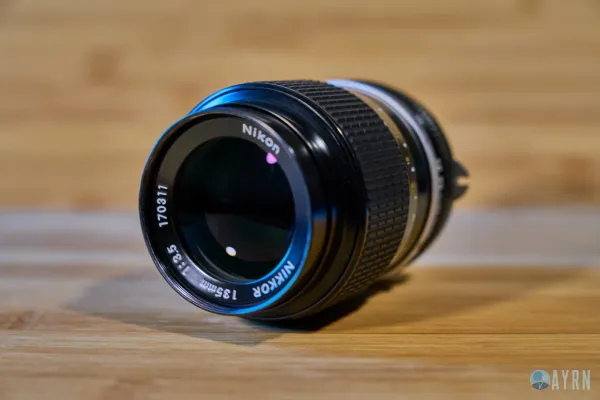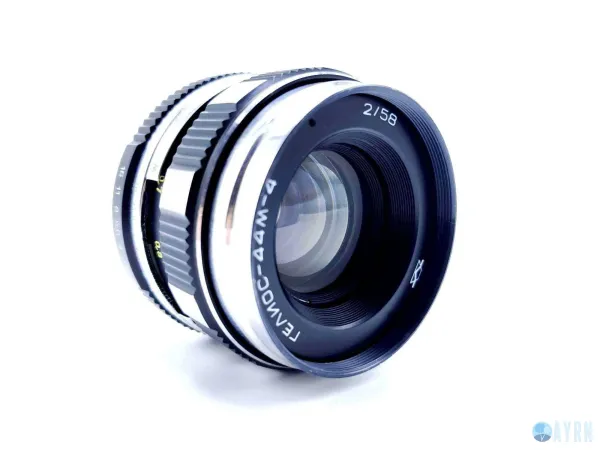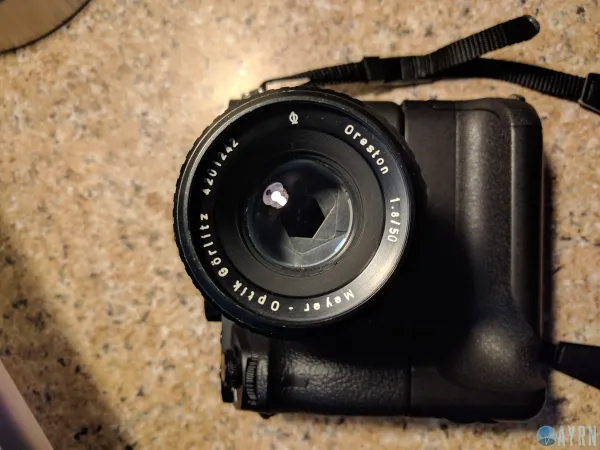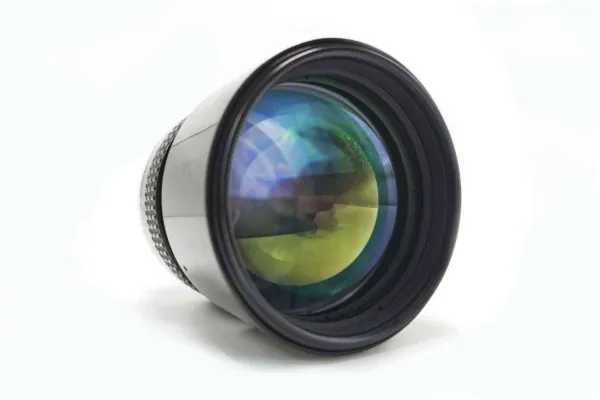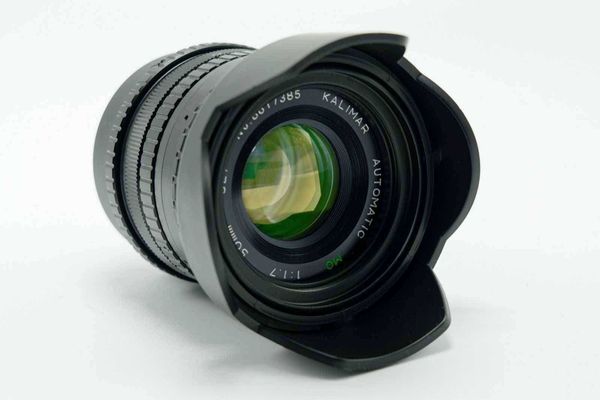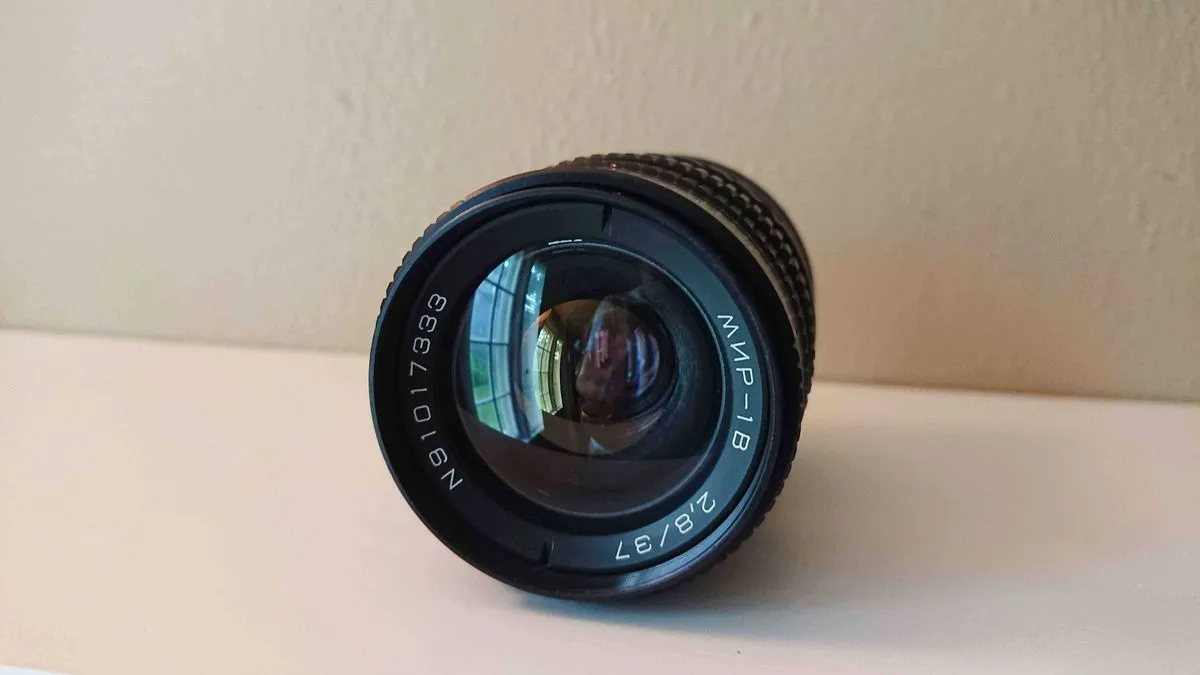
MIR-1V 37mm f2.8 Lens
The MIR-1V 37mm f/2.8 lens, manufactured by KMZ starting in 1957 and up until the 80s, offers exceptional optical performance in a nearly indestructible package. With a compact and lightweight build, this manual focus lens is ideal for capturing landscapes, street scenes, and portraits with stunning clarity and detail.
- The MIR-1V 37mm f2.8 Lens is a beautifully quirky soviet era lens with dreamy lens flare and quasi-magical bokeh that is not unlike the bokeh found on other legendary Russian lenses like the Helios, although, unlike the Helios, it’s 10 blades render a perfectly-rounded bokeh effect.
- While it takes mastery to use properly, the MIR-1V is capable of providing superb results with the right technique.
- It’s pleasantly soft wide open, but starts to get sharp at f/4 and is tack sharp by f/8.
The 270° rotation on the focus ring makes this lens delightfully precise and allows you to nail the focus on subjects.
Contents
- Introduction
- Unboxing and First Impressions
- Specifications
- Build Quality and Design Features
- Optical Performance
- Sample Images
- Ideal Use Cases
- Comparison with Other Lenses
- History and Background
- Current Market Price and Availability
- User Reviews and Feedback
- Pros and Cons
- Frequently Asked Questions (FAQ)
- Conclusion
Introduction to the MIR-1V 37mm f/2.8 Lens
The MIR-1V 37mm f/2.8 lens is a classic piece of Soviet optical engineering that has managed to captivate photographers for decades. Known for its unique character and vintage charm, this lens has a special place in the hearts of those who appreciate the quirks of manual focus lenses from the Cold War era. Whether you’re a collector or a street photographer looking for that distinctive "vintage look," the MIR-1V delivers an experience that’s hard to match.
Unboxing and First Impressions of the MIR-1V 37mm f/2.8 Lens
Unboxing the MIR-1V feels like taking a step back in time. The lens, often found in its original leather case, exudes a sense of durability that’s rare in modern optics. Holding it for the first time, you’ll notice the weight—solid, reassuring, and a testament to its metal construction. The aperture ring clicks smoothly, and the focus ring, though a bit stiff, moves with a precision that’s become synonymous with lenses from this era. First impressions? This lens means business.
MIR-1V 37mm f/2.8 Lens Specifications
| Brand: | MIR |
| Manufacturer: | KMZ (Krasnogorsky Mekhanichesky Zavod) |
| Country of manufacture: | Soviet Union (Russia) |
| Model #: | MIR-1V |
| Focal range: | 37mm |
| Maximum aperture: | f/2.8 |
| Minimum aperture: | f/16 |
| Number of aperture blades: | 10 |
| Angle of view: | 60 degrees |
| Optical formula: | 6 Elements in 5 Groups |
| Minimum focal distance (MFD): | 0.7m |
| Filter thread size: | 49mm |
| Lens hood: | Optional (metal screw-in) |
| Mount type: | M42 |
Build Quality and Design Features of the MIR-1V 37mm f/2.8 Lens
The MIR-1V was built in an era where things were made to last. This lens features a full-metal body, from the mount to the focus ring, giving it a robust, almost indestructible feel. The design is minimalist, with no fancy switches or buttons—just pure, unadulterated functionality. The aperture ring is decoupled from the focus mechanism, allowing for smooth adjustments without shifting focus. It’s a lens that demands respect, not just for its history but for the craftsmanship that went into its creation.
| Feature name | Feature (Y/N/NA) |
|---|---|
| Zoom ring | N/A |
| Focus ring | Yes (textured metal) |
| Autofocus | No |
| Focus type | Manual |
| Focus motor | N/A |
| Image stabilization | No |
| Optical coating(s) | Yes (single coating) |
| Front element rotation while focusing | No |
| Internal focusing | No |
| Lens extension while focusing | Yes |
| Lens extension while zooming | N/A |
| Dedicated autofocus on/off switch | No |
| Dedicated focus hold button | No |
| Zoom lock to prevent focal length shift | N/A |
Optical Performance of the MIR-1V 37mm f/2.8 Lens
Despite its age, the MIR-1V is no slouch when it comes to optical performance. The lens is known for its distinctive "swirly" bokeh, a characteristic that has made it a favorite among portrait photographers. While not razor-sharp by modern standards, it offers a pleasing softness that can lend a dreamy quality to images. Stopped down to f/5.6 or f/8, the lens sharpens up nicely, making it a versatile tool for both close-up work and landscapes.
Sample Images from the MIR-1V 37mm f/2.8 Lens
One of the MIR-1V’s most captivating features is its ability to render images with a unique character that’s difficult to replicate with modern lenses. The “swirly” bokeh effect is especially evident when shooting wide open, creating a beautiful, almost painterly background that draws attention to the subject. Colors tend to be rich and slightly warm, adding to the vintage feel of the images. The lens does show some vignetting at wider apertures, but this often enhances the overall aesthetic rather than detracting from it.
Ideal Use Cases for the MIR-1V 37mm f/2.8 Lens
The MIR-1V shines in situations where character is more important than clinical sharpness. It’s a fantastic choice for portrait photographers who want to create dreamy, artistic images with a vintage touch. Street photographers will also appreciate its compact size and discreet appearance, making it easy to capture candid moments without drawing too much attention. While it can be used for landscapes, the lens truly excels in scenarios where you want to emphasize the subject against a beautifully blurred background.
Comparison: MIR-1V 37mm f/2.8 vs. Other Lenses
When comparing the MIR-1V to other vintage lenses, it holds its own quite well, especially in terms of character and build quality.
-
Helios 44-2 58mm f/2: The Helios 44-2 is another legendary Soviet lens known for its swirly bokeh. While it has a longer focal length and a faster maximum aperture, the MIR-1V offers a wider field of view, making it more versatile for certain types of photography. Both lenses share a similar build quality and vintage charm, but the MIR-1V’s 37mm focal length might be more appealing for street photography.
-
Industar-61 L/D 53mm f/2.8: The Industar-61 is a sharp, compact lens with a slightly narrower field of view than the MIR-1V. It’s known for its sharpness and contrast, especially when stopped down. However, it lacks the distinctive bokeh character of the MIR-1V, making the MIR a better choice for portraits and artistic photography.
-
Jupiter-8 50mm f/2: The Jupiter-8 is a classic rangefinder lens with a similar vintage appeal. It’s smaller and lighter than the MIR-1V but has a narrower focal length. The Jupiter-8’s bokeh is smoother, but it lacks the swirly character that makes the MIR-1V so unique. If you’re after a more subtle background blur, the Jupiter-8 might be a better fit, but for those who love character, the MIR-1V is hard to beat.
History and Background of the MIR-1V 37mm f/2.8 Lens
The MIR-1V has an illustrious history that dates back to the 1950s. It was originally designed based on the Carl Zeiss Jena Flektogon 35mm f/2.8, which the Soviets acquired after World War II. The lens quickly became a staple of Soviet photography, prized for its wide-angle capabilities and robust construction. The MIR-1V is a variant of the original MIR-1, with the "V" indicating a version designed for Zenit cameras. Over the years, the lens has gained a cult following, not just for its performance but for the history and nostalgia it embodies.
Current Market Price and Availability of the MIR-1V 37mm f/2.8 Lens
The MIR-1V is widely available on the second-hand market, particularly through online platforms like eBay and various photography forums. Prices can vary significantly depending on the condition and any included accessories, but you can typically expect to pay between $50 and $100 for a well-maintained copy. Given its unique characteristics and historical significance, the MIR-1V represents excellent value for money, especially for those looking to add a bit of vintage flair to their photography.
User Reviews and Feedback on the MIR-1V 37mm f/2.8 Lens
User reviews of the MIR-1V are generally positive, with many photographers praising its unique bokeh and build quality. Some users have noted that the lens can be soft at wider apertures, but this is often seen as part of its charm rather than a flaw. The manual focus and lack of modern coatings can be a drawback for some, but for those who appreciate vintage lenses, these are often seen as features rather than downsides. Overall, the MIR-1V has garnered a dedicated following among those who appreciate its unique blend of character and history.
Pros and Cons of the MIR-1V 37mm f/2.8 Lens
| Pros | Cons |
|---|---|
| ➕ Unique swirly bokeh effect | ❌ Soft wide open |
| ➕ Solid metal construction | ❌ Manual focus only |
| ➕ Rich, warm color rendering | ❌ Lacks modern lens coatings |
| ➕ Affordable and widely available | ❌ Somewhat heavy compared to modern lenses |
| ➕ Rich history and vintage appeal | ❌ Vignetting at wider apertures |
Frequently Asked Questions (FAQ) about the MIR-1V 37mm f/2.8 Lens
Q: Can the MIR-1V 37mm f/2.8 be used on modern digital cameras?
A: Yes, with the appropriate M42 to your camera mount adapter, the MIR-1V can be used on most modern digital cameras.
Q: Is the MIR-1V a good lens for beginners?
A: It can be a bit challenging due to its manual focus and lack of modern features, but for those interested in learning the fundamentals of photography and exploring vintage lenses, it’s an excellent choice.
Q: Does the MIR-1V have good resale value?
A: Generally, yes. The lens holds its value well, especially if it’s in good condition with original accessories.
Conclusion: Is the MIR-1V 37mm f/2.8 Worth It?
If you're a photographer who values character over clinical sharpness, the MIR-1V 37mm f/2.8 lens is definitely worth considering. Its unique bokeh, solid build quality, and vintage appeal make it a standout choice, especially at its price point. While it may not be the best option for fast-paced modern photography, for those who appreciate the artistry of vintage lenses, the MIR-1V offers an experience that’s hard to replicate with contemporary glass.



